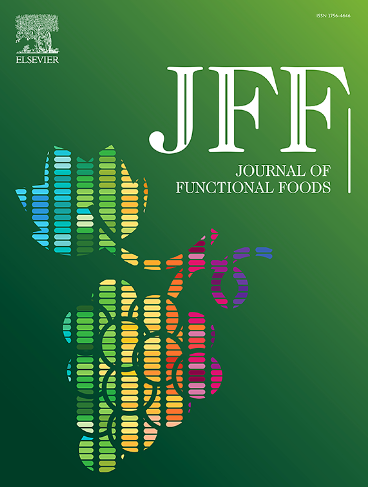Nutritional and health promoting properties of traditional regional foods: Harnessing omics techniques for microbial and metabolite identification
IF 4
2区 农林科学
Q2 FOOD SCIENCE & TECHNOLOGY
引用次数: 0
Abstract
Traditional food is an integral part of cultural heritage and identity for indigenous peoples' worldwide. It reflects a rich tapestry of flavours, textures, and nutritional benefits that resonate both locally and globally. Traditional foods encapsulate centuries-old culinary practices and embody a profound connection to local ecosystems, climates, and cultural heritage. Asia, with its vast geographical area and cultural diversity, boasts a particularly diverse regional cuisine. Historically, citizens were unaware of the health benefits of their traditional regional foods, but scientific advancements have illuminated these advantages, leading to global promotion of local cuisines, for example, toddy and shalgam or India origin delivered anti-tumor properties and were heart-friendly foods; various pickles (through the globe) contributed to reducing serum cholesterol, were heart-nurturing and improved digestion; jamu kunir asem (Indonesia) aided in curing respiratory disorders and shown antiviral activities; gilaburu juice (Turkey) relieved renal disorders, respiratory disorders, and hypertension; and kimchi (Korea) prohibited tumor formation and possessed anti-hyperglycemic activity. From fermented pickles to probiotic-rich dairy products, traditional foods were shown provide an array of bioactive compounds and nutrients contributing to overall well-being. Furthermore, the integration of meta-omics tools enables researchers to unravel the secrets of traditional fermentation processes, ensuring both safety and authenticity while navigating the delicate balance between cultural authenticity and contemporary dietary needs. This article explores various traditional foods from different regions across the globe, their metabolites, and associated health benefits

传统地方食品的营养和健康促进特性:利用组学技术进行微生物和代谢物鉴定
传统食物是世界各地土著人民文化遗产和身份的组成部分。它反映了丰富的风味、质地和营养价值,在当地和全球都引起了共鸣。传统食物包含了几个世纪以来的烹饪实践,体现了与当地生态系统、气候和文化遗产的深刻联系。亚洲幅员辽阔,文化多样,地域美食尤其丰富多彩。从历史上看,公民没有意识到他们传统的地方食物对健康的好处,但科学进步已经阐明了这些好处,导致全球推广当地美食,例如,托迪酒和沙勒格姆或印度原产具有抗肿瘤特性,是有益心脏的食物;各种泡菜(遍布全球)有助于降低血清胆固醇,滋养心脏和改善消化;jamu kunir asem(印度尼西亚)有助于治疗呼吸系统疾病并显示抗病毒活性;gilaburu果汁(土耳其)缓解肾脏疾病、呼吸系统疾病和高血压;泡菜(韩国)禁止肿瘤形成并具有抗高血糖活性。从发酵泡菜到富含益生菌的乳制品,传统食品被证明提供了一系列生物活性化合物和营养物质,有助于整体健康。此外,整合元组学工具使研究人员能够揭开传统发酵过程的秘密,确保安全性和真实性,同时在文化真实性和当代饮食需求之间取得微妙的平衡。这篇文章探讨了来自全球不同地区的各种传统食物,它们的代谢物和相关的健康益处
本文章由计算机程序翻译,如有差异,请以英文原文为准。
求助全文
约1分钟内获得全文
求助全文
来源期刊

Journal of Functional Foods
FOOD SCIENCE & TECHNOLOGY-
CiteScore
9.60
自引率
1.80%
发文量
428
审稿时长
76 days
期刊介绍:
Journal of Functional Foods continues with the same aims and scope, editorial team, submission system and rigorous peer review. We give authors the possibility to publish their top-quality papers in a well-established leading journal in the food and nutrition fields. The Journal will keep its rigorous criteria to screen high impact research addressing relevant scientific topics and performed by sound methodologies.
The Journal of Functional Foods aims to bring together the results of fundamental and applied research into healthy foods and biologically active food ingredients.
The Journal is centered in the specific area at the boundaries among food technology, nutrition and health welcoming papers having a good interdisciplinary approach. The Journal will cover the fields of plant bioactives; dietary fibre, probiotics; functional lipids; bioactive peptides; vitamins, minerals and botanicals and other dietary supplements. Nutritional and technological aspects related to the development of functional foods and beverages are of core interest to the journal. Experimental works dealing with food digestion, bioavailability of food bioactives and on the mechanisms by which foods and their components are able to modulate physiological parameters connected with disease prevention are of particular interest as well as those dealing with personalized nutrition and nutritional needs in pathological subjects.
 求助内容:
求助内容: 应助结果提醒方式:
应助结果提醒方式:


